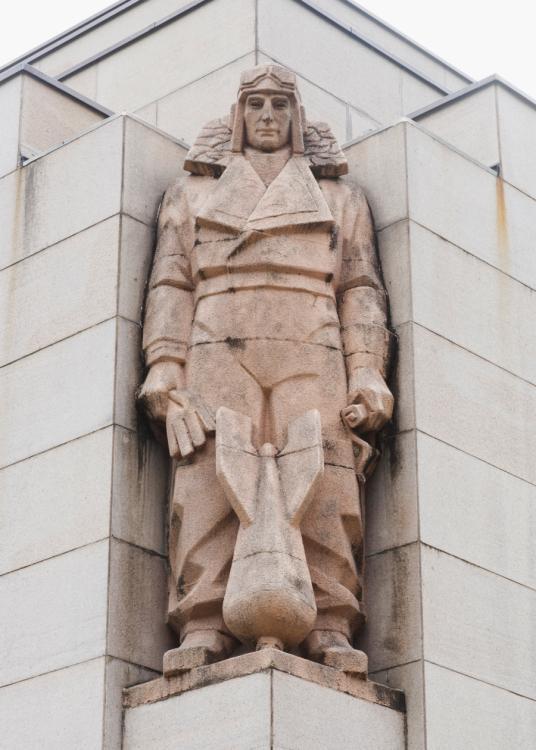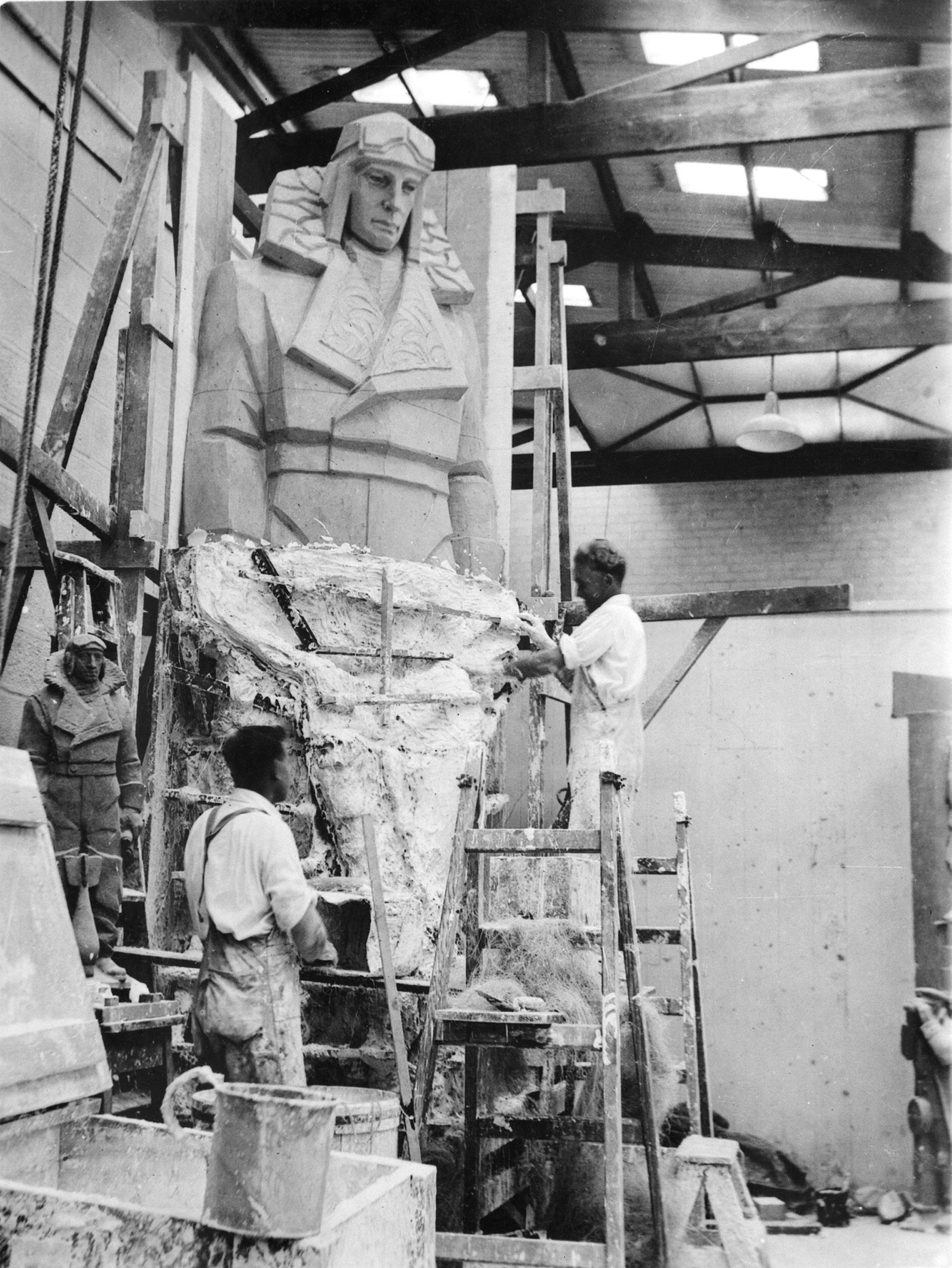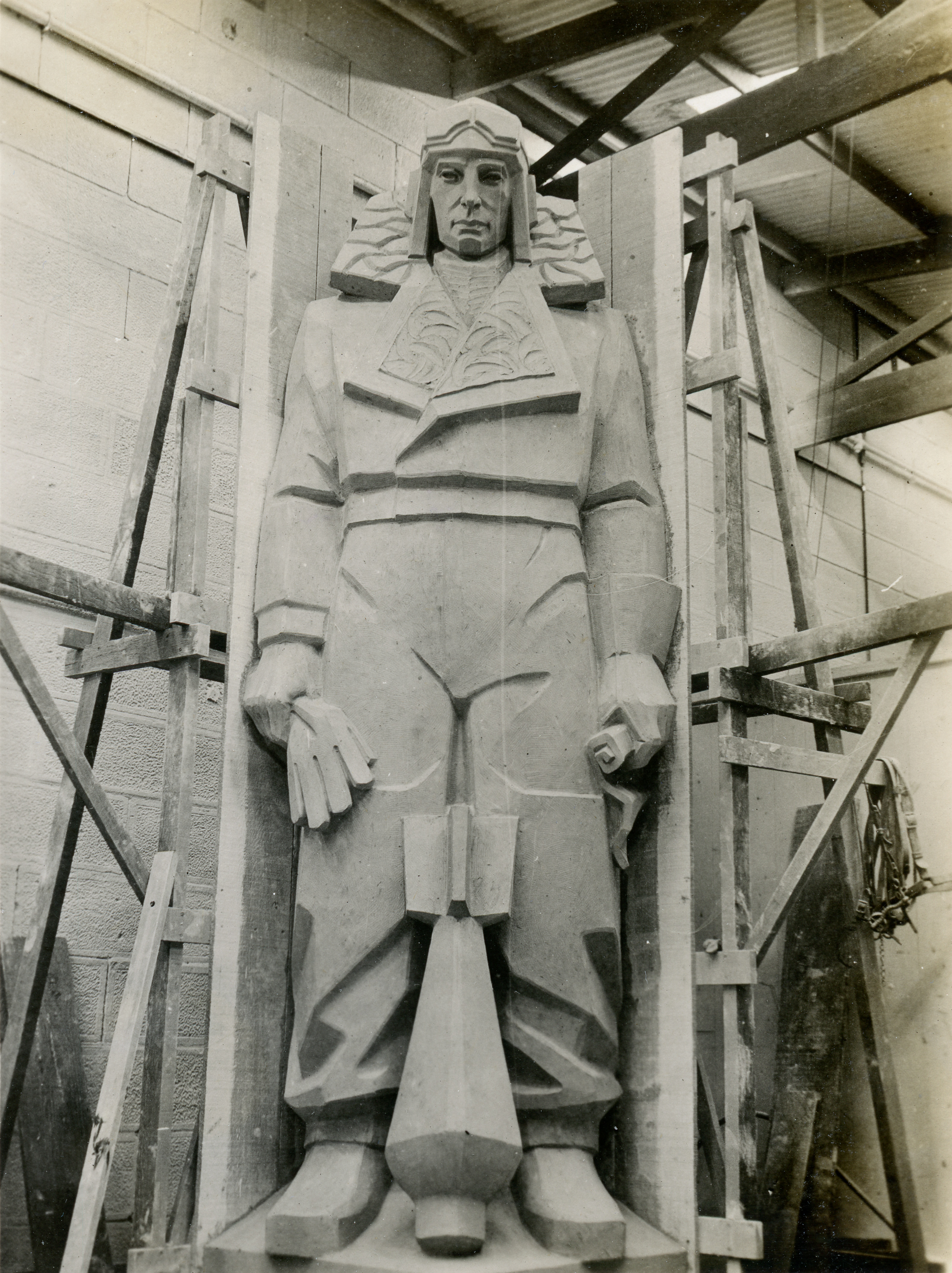The air force officer was the anachronistic title used for this sculpture created in 1934. Australia had military aviators during the Great War, but they were soldiers of the Australian Flying Corps, a unit of the AIF. It did not establish its own air force until 1921.
In his flying suit, flying helmet with goggles and leather gauntlets – and an aerial bomb at his feet – he looks courageous and daring. By 1918 the aeroplane had become one of the deadliest new weapons on the battlefield and tactics such as strategic bombing would change the nature of war forever. The officer is wearing special clothing to protect himself from the bone-numbing cold while sitting in the open cockpit of an aircraft made of wood and doped canvas.
The four large figures were made in Hoff's studio at the National Art School. Hoff would model a clay figure to half life-size and it would be enlarged exactly to scale by his assistants using a pointing machine. A plaster cast was then made in segments and then the clay was removed from the inside. You can read more about the process in Deborah Beck's book "Rayner Hoff - the life of a sculptor" (NewSouth Publishing, 2017)


